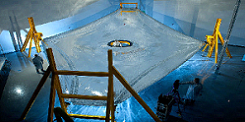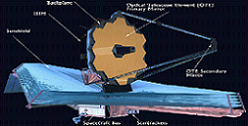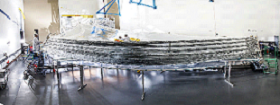
 30-Dec-21
30-Dec-21 The sunshield's membrane layers, each as thin as a human hair, are made of Kapton, a tough, high-performance plastic coated with a reflective metal. Photo: Northrop Grumman
The all important James Webb Telescope mission which will provide a glimpse into the origin of the universe is an ambitious 10 billion dollar mission. Sunshields made of Kapton, a high performance plastic has made this telescope possible
The James Webb Space Telescope's primary science comes from infrared light, which is essentially heat energy. To detect the extremely faint heat signals of astronomical objects that are incredibly far away, the telescope itself has to be very cold and stable. This means we have to protect Webb from external sources of light and heat (like the sun and the earth). The temperature also must be kept constant so that materials aren't shrinking and expanding, which would throw off the precise alignment of the optics.
To accomplish all of this, Webb deploys a tennis-court sized Sunshield made of five thin layers of Kapton E with aluminum and doped-silicon coatings to reflect the sun's heat back into space. The Kapton is a commercially available polyimide film from Dupont, while the coatings are applied to a specialized Webb specification.
On orbit, the observatory will be pointed so that the sun, Earth and moon are always on one side, with the sunshield acting as an umbrella to shade the telescope mirrors and instruments from the warmer spacecraft electronics and the sun. Photo: Northrop Grumman/Alex Evers
Each layer is coated with aluminum, and the sun-facing side of the two hottest layers (designated Layer 1 and Layer 2) also have a "doped-silicon" (or treated silicon) coating to reflect the sun's heat back into space. The sunshield is a critical part of the Webb telescope because the infrared cameras and instruments aboard must be kept very cold and out of the sun's heat and light to function properly.
Kapton is a polyimide film that was developed by DuPont in the late 1960s. It has high heat-resistance and remains stable across a wide range of temperatures from minus 269 to plus 400 Celsius (minus 452 to plus 752 degrees Fahrenheit). It does not melt or burn at the highest of these temperatures. On Earth, Kapton polyimide film can be used in a variety of electrical and electronic insulation applications.
Source NASA




Previous News
Next News
{{comment.DateTimeStampDisplay}}
{{comment.Comments}}